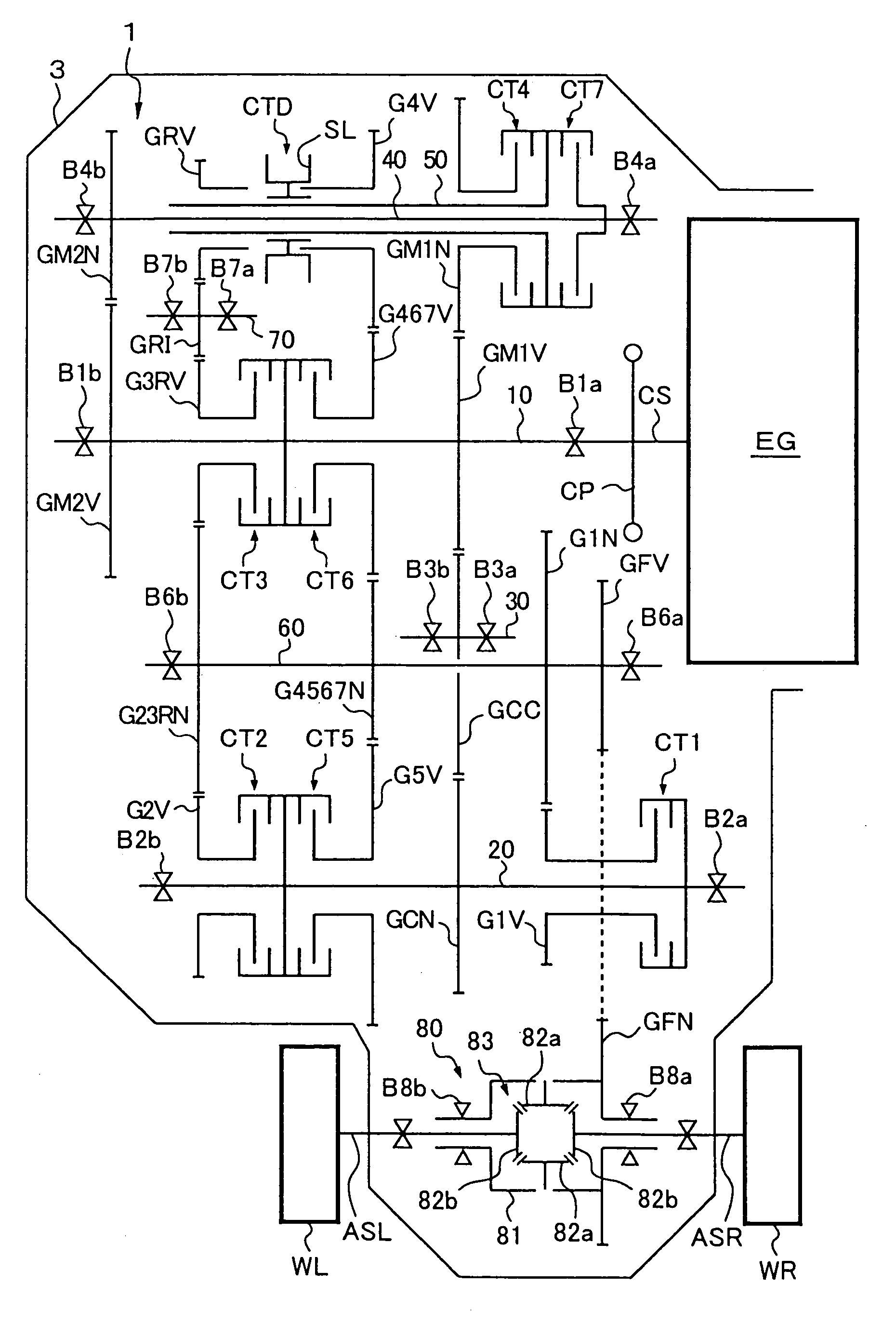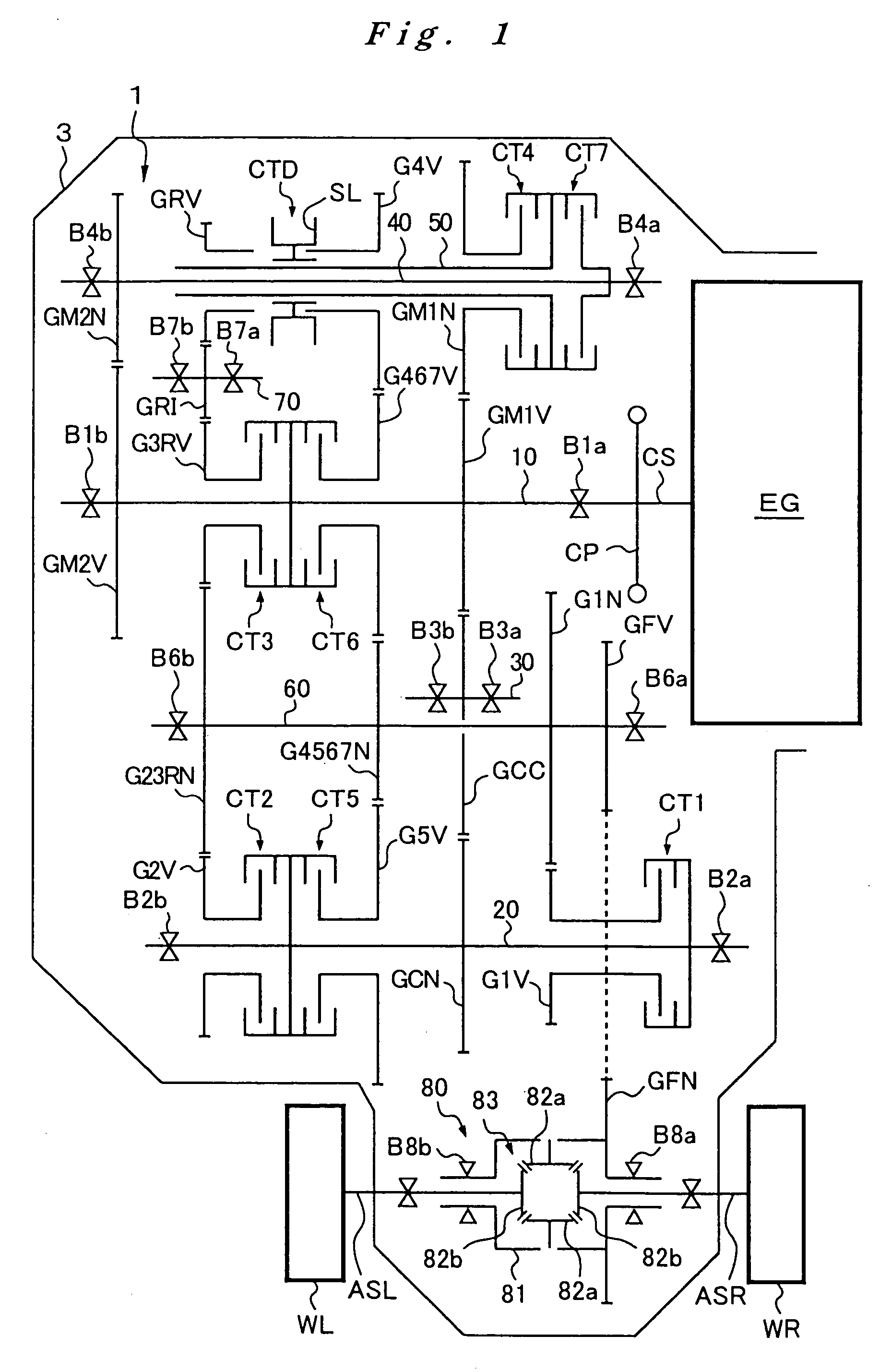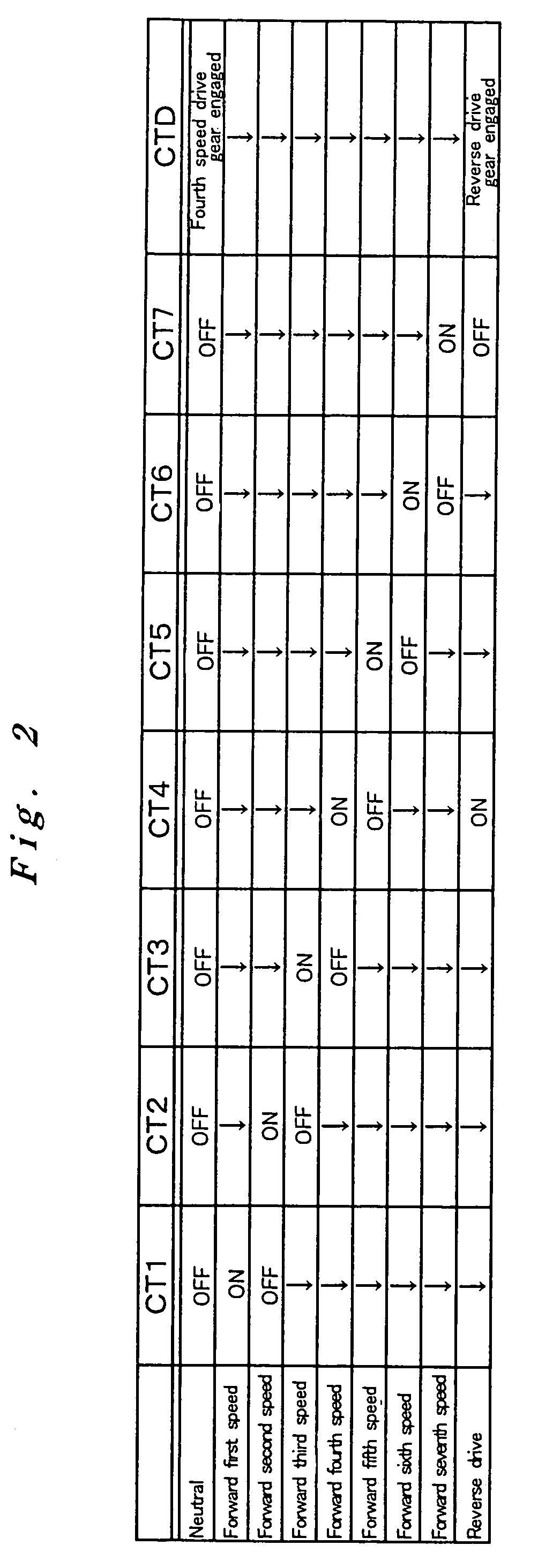Parallel shaft transmission
a transmission shaft and parallel shaft technology, applied in mechanical equipment, transportation and packaging, gearing, etc., can solve the problems of difficult to achieve a sufficient size reduction in the axial direction, and the transmission is designed to occupy a limited amount of space, and achieve the effect of compact structure and small dimension
- Summary
- Abstract
- Description
- Claims
- Application Information
AI Technical Summary
Benefits of technology
Problems solved by technology
Method used
Image
Examples
first embodiment
[0049]In the transmission 1 as a first embodiment, which achieves seven forward speed change ratios and one reverse speed change ratio as described above, the gear (fourth, fifth, sixth and seventh speed driven gear G4567N) provided on the output shaft 60 to rotate the output shaft 60 in the forward direction in the forward fourth speed condition is used commonly to rotate the output shaft 60 in the forward direction also in the forward fifth speed condition, in the forward sixth speed condition and in the forward seventh speed condition. In short, this specific gear is a commonly used gear. In this way, the number of the gears to be provided on the output shaft 60 for achieving this large number of forward speed change ratios is kept relatively small. As a result, the size of the transmission 1 in its axial direction is relatively small, so the transmission 1 has a compact design.
[0050]Furthermore, in the transmission 1, the second and third speed and reverse driven gear G23RN is p...
second embodiment
[0055]To switch the transmission 1′ as a second embodiment from the forward seventh speed condition to a forward eighth speed condition, the seventh speed clutch CT7 is turned from “ON” to “OFF”, and the eighth speed clutch CT8 is turned from “OFF” to “ON”. As a result, the first countershaft 40 and the second countershaft 50 are disconnected from each other while the intermediary shaft 20′ and the auxiliary intermediary shaft 25 are connected to each other. In this condition, or the forward eighth speed condition of the transmission 1′, the power of the engine EG, which is transmitted from the input shaft 10 through the first main drive gear GM1V, the connecting idle gear GCC and the connecting driven gear GCN to the intermediary shaft 20′, is transmitted by the eighth speed clutch CT8 to the auxiliary intermediary shaft 25 and then through the eighth speed drive gear G8V and the eighth speed driven gear G8N to the output shaft 60.
[0056]In the above described ways, the transmission...
PUM
 Login to View More
Login to View More Abstract
Description
Claims
Application Information
 Login to View More
Login to View More - R&D
- Intellectual Property
- Life Sciences
- Materials
- Tech Scout
- Unparalleled Data Quality
- Higher Quality Content
- 60% Fewer Hallucinations
Browse by: Latest US Patents, China's latest patents, Technical Efficacy Thesaurus, Application Domain, Technology Topic, Popular Technical Reports.
© 2025 PatSnap. All rights reserved.Legal|Privacy policy|Modern Slavery Act Transparency Statement|Sitemap|About US| Contact US: help@patsnap.com



